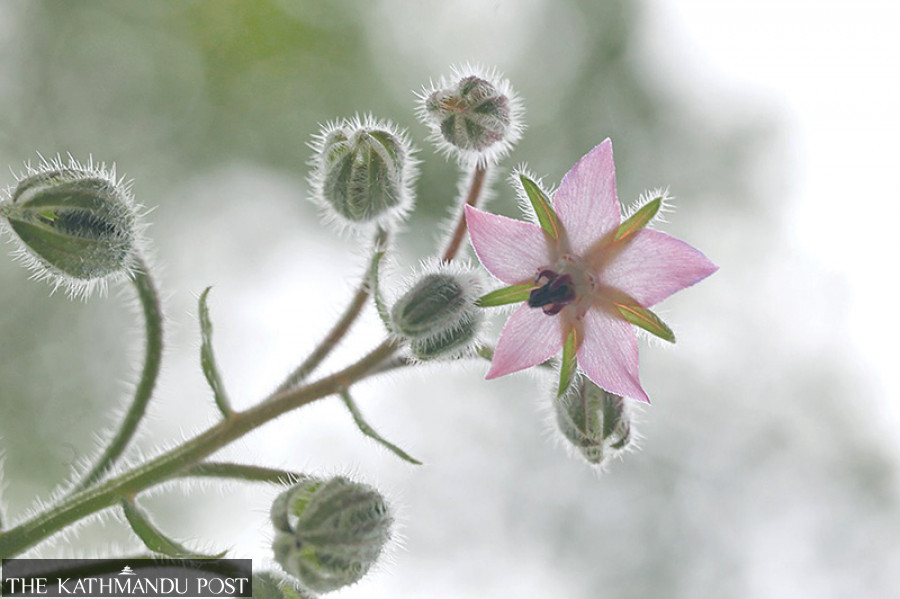Health
Environmental toxicity and climate crisis threaten Nepal’s medicinal plants
Heavy metal contamination also has implications on human health, while the climate crisis could greatly alter the habitats of plant species.
Arjun Poudel
Toxic metals like arsenic, cadmium, lead, and mercury have been found in three medicinal plants used in Ayurvedic medicines to treat common diseases and ailments.
Officials say the medicinal plants might have been exposed to such hazardous metals in the past too but they weren’t aware of the level of toxicity.
“This study was carried out to measure the levels of toxicity in medicinal plants,” said Dr Basudev Upadhyay, director general at the Department of Ayurveda and Alternative Medicine under the Ministry of Health and Population. “This study will help us compare the level of toxicity in the plants in the future.”
Toxic metals were assessed in Tinospora cordifolia (Guduchi), Berberis aristata (Daruharidra) and Neopicrorhiza scrophulariiflora (Katuki) in the study “Impact of Climate Change on Medicinal Plants of Selected Districts in Nepal-2020,” carried out by the department.
The study was carried out in three districts—Manang, Dhading and Parsa—and three important medicinal plants were chosen for the study.
The researchers traced 0.14, 0.008, 0.65, and 0.08 parts per million (ppm) of arsenic, cadmium, lead, and mercury, respectively in the sample of Neopicrorhiza scrophulariiflora.
Similarly, the sample of Berberis aristata had 0.08ppm of arsenic, 0.08ppm of cadmium, 0.08ppm of lead, and 0.04ppm of mercury.
The Tinospora cordifolia also showed 0.09ppm of arsenic, 0.08 of cadmium, 0.40ppm of lead, and 0.08ppm of mercury.
The World Health Organisation’s acceptable limits for these most common heavy metals are 3ppm for arsenic, 0.3ppm for cadmium, 10ppm for lead, and 0.03ppm for mercury.
“Environment pollution, mainly soil pollution, is the chief cause of high exposure of medicinal plants to toxic metals,” said Dr Puneshwar Keshari, an expert on medicinal plants. “The report of the study shows that negative impacts of environmental pollution are not only limited to cities but are also visible in rural areas. It has impacted not only food products and human health but also medicinal herbs.”
Tinospora cordifolia has been used for ages in the treatment of fever, jaundice, chronic diarrhoea, cancer, dysentery, bone fracture, pain, asthma, skin disease, poisonous insect, snake bite, and eye disorders.
Berberis aristata is used as an antibacterial, antiperiodic, antidiarrheal and anticancer medicine and it is also used in the treatment of ophthalmic infections. Neopicrorhiza scrophulariiflora is effective in curing fever, jaundice, hemorrhoid, and dysentery.
Experts say exposure to high levels of lead may cause anaemia, weakness, and kidney and brain damage. Exposure to excessive levels of mercury may cause lung damage, and potential damage to the brain and kidney, and blood loss.
Likewise, long-term exposure to arsenic leads to skin disorders and increases the risk of skin, bladder, and lung cancer.
Doctors say exposure to cadmium over a long period of time can lead to kidney disease and the weakening of bones.
“High levels of heavy metals—lead, mercury, cadmium, and arsenic—were found more in the plants collected from near the highways, which means highways and city areas are more polluted,” said Upadhyay, director at the Department of Ayurveda and Alternative Medicine. “But that doesn't mean other areas are safe. The study showed the presence of toxic metals in medicinal plants collected from all three districts of three ecological regions—mountains, hills, and the tarai.”
Environmental pollution isn’t the only threat to Nepal’s medicinal plants. A recent study on “Climate change-induced distributional change of medicinal and aromatic plants in the Nepal Himalaya,” shows that future climate change will reduce suitable habitats for the majority of the traded medicinal and aromatic plants.
The medicinal and aromatic plants in Nepal are major drivers of traditional health care, household income, and export.
“Our results showed that climatically suitable areas of the majority of traded medicinal and aromatic plants will be reduced with future climate change,” said Dr Uttam Babu Shrestha, director of the Global Institute for Interdisciplinary Studies in Kathmandu. “Reduction in climatically suitable areas for medicinal and aromatic plants can cause serious consequences for the livelihoods of people dependent on the collection and trade of herbs.”
Nepal has been at the receiving end of the climate crisis.
Scores of studies and scientific analyses over the decade, and more recently, the IPCC report, have warned that Nepal is one of the most vulnerable countries and it cannot be business-as-usual to tackle the adverse impacts of the climate crisis.
Experts said the impacts of environmental changes on medicinal plants are observed in the depletion of plants and their shifting to higher altitudes. They say anthropogenic pollution (pollution caused directly by human activities) is affecting plant diversity and soil with heavy metals and pesticide residues, toxicity which restricts medicinal plants for medical uses.
“Remote and rural areas, where pollution has been recorded at insignificant levels, have been found safe for medicinal plants cultivation and wild collection,” said Keshari, an expert on medicinal plants, who was also involved in the study. “Climate change and environment pollution markedly affect survival and quality of medicinal plants and ultimately pose a great threat to the Ayurveda system of medicine in the future.”
The study, carried out by the Department of Ayurveda and Alternative Medicine, was both qualitative and quantitative, conducted among at least 100 households in Parsa, Dhading, and Manang districts.
Semi-structured questionnaires, focal group discussions and in-depth interviews with focal persons of the villages were conducted to determine livelihood vulnerability.
Keshari said shifts in vegetation and species extinctions are expected in the coming days due to changes in climatic patterns.
“Climate change has increased the risk of losing valuable medicinal plants in the coming days and could also increase the risk of medicinal herbs not being as effective as they are at present,’ said Keshari. “Medicinal herbs containing heavy toxic metals—mercury, lead, cadmium, and arsenic—in excessive amounts cannot be used.”




 12.12°C Kathmandu
12.12°C Kathmandu














